Today Emmett Roberts, a consent educator, library studies student, and intern with InsideOUT, reflects on what kinds of books young people in the LGBTIQ+ community – and beyond it – need, and gives us some recommendations to check out, from picture books to YA.
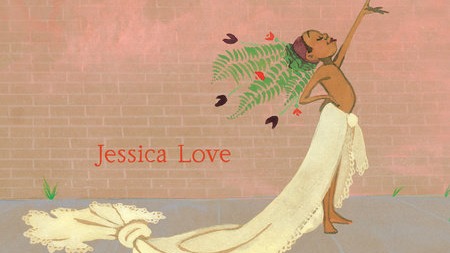
Books play a huge role in the way we learn to understand the world around us, and the way we understand ourselves. When it comes to gender identity and sexuality, books have the added bonus of being something we can consume privately, quietly. Many a young queer or trans person has found themself between the pages of a book.
It’s not just the LGBTIQ+ community that benefits from representation: friends and family of the community can learn or come to better understand our experiences. As Day of Silence (17 August) approaches, we’re thinking about the ways we can all challenge homophobia, biphobia and transphobia, and how the books we read can help us do that.
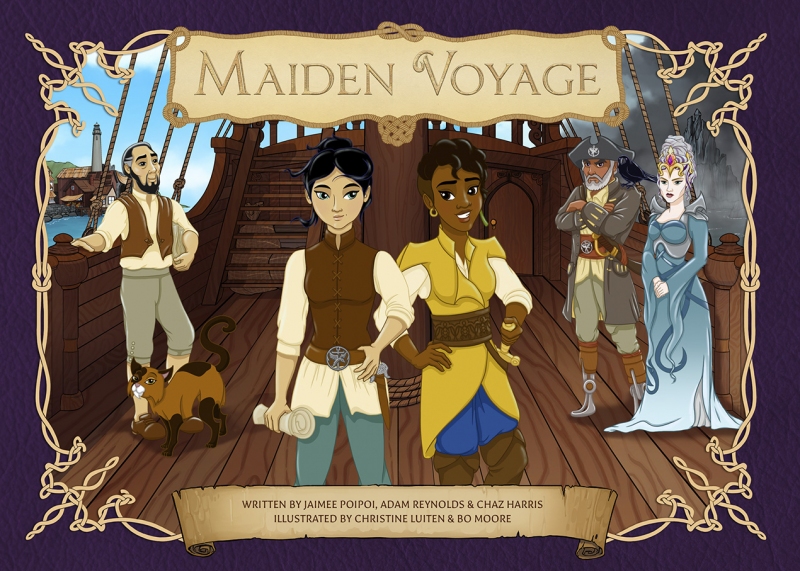
See us
We all deserve to see ourselves represented in the books we read, no matter our age or identity. While representation in Young Adult books is becoming more and more common, books for younger children are sometimes harder to find – in part because of the assumption that books featuring queer or gender diverse characters need to be about being queer or gender diverse. In reality, most children and young people just want to see characters like themselves doing the sorts of things other characters do, whether that’s going on a fantastical adventure, or simply dealing with the school bully.
Promised Land (by Adam Reynolds and Chaz Harris, illustrated by Christine Luiten and Bo Moore) is a fairy tale picture book featuring all the usual: beautiful queens, scheming step-parents, a magical forest and a romance between a prince and a farm boy. Their follow-up book, Maiden Voyage (with Jaimee Poipoi joining the writing team), features a love story between two women (a captain and a fisherman’s daughter) for an equally delightful tale, this time at sea.
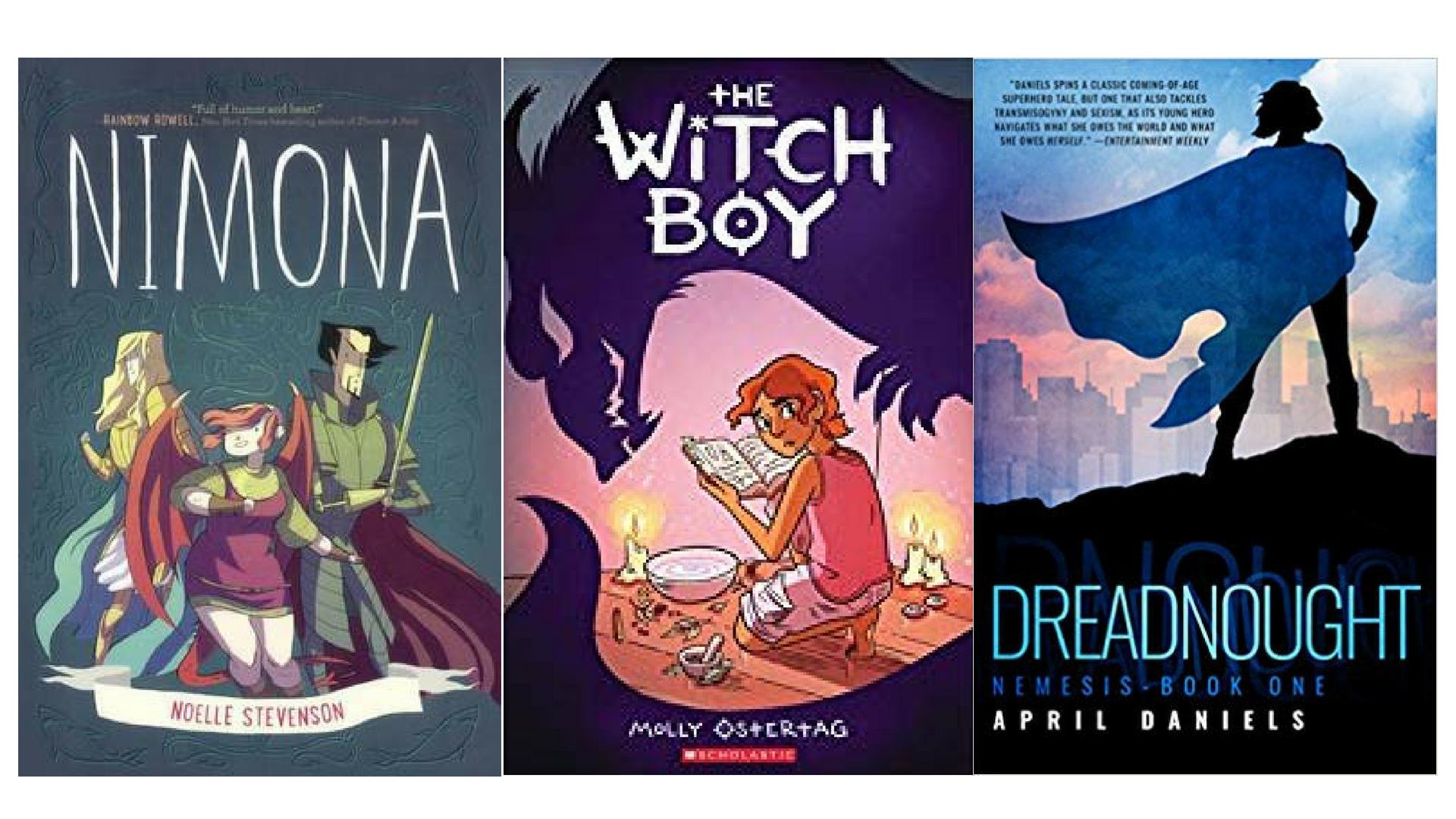
Even when the story isn’t explicitly about an LGBTIQ+ character, seeing ourselves acknowledged in everyone’s world is important.
While not explicitly a story about trans experiences, Molly Knox Ostertag’s The Witch Boy explores gender and gender roles in a way that appeals to many trans or gender non-conforming youth. The more explicit representation – a character with two dads, who are referenced openly and casually presents the idea that even when a text isn’t about queer relationships, they exist and are valued.
Like Promised Land and Maiden Voyage, Nimona, by Noelle Stevenson, has everything you need in a great fantasy, with the addition of a gay romance that is seen as completely natural within the universe.
Dreadnought by April Daniels speaks to the longing felt by a lot of young trans people, to have the world recognise who they are, while placing the main character Danny in the empowering role of superhero.
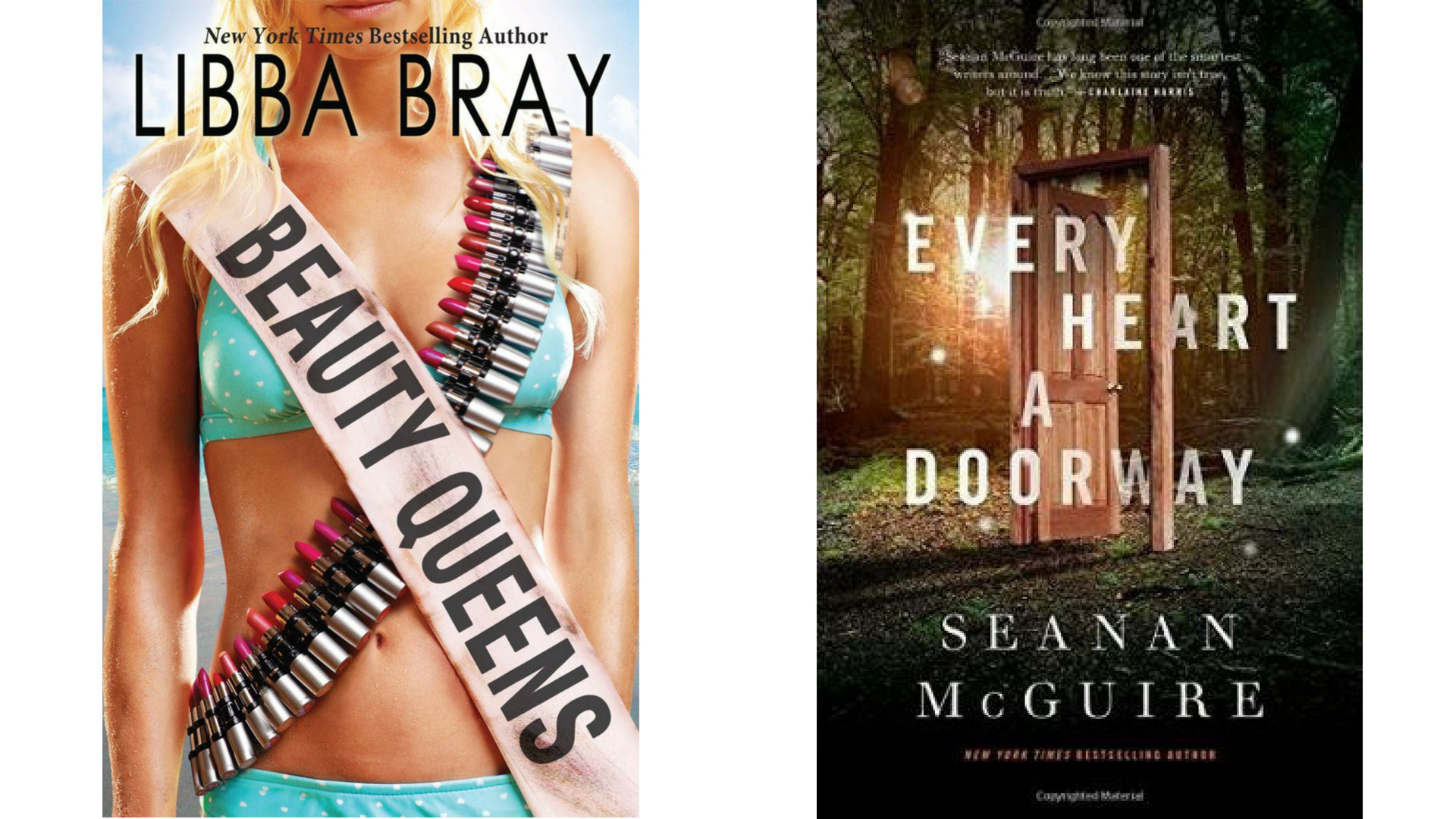
In Beauty Queens Libba Bray gives Lord of the Flies a do-over, this time with a plane full of beauty pageant contestants, and turns it into a story about friendships, feminism and what happens when women work together, and explicitly includes a trans woman in this collective.
Validate us
While queer and gender diverse representation is becoming more common, we need to keep in mind that not all representation is created equal. Queer coded characters are not new in media for young people, but they have tended to be coded as bad, deviant, or simply inaccurate (even the seemingly innocent Powerpuff Girls is guilty of this), so texts that not only show LGBTIQ+ characters, but that also validate their existence, reality and rights are incredibly important.
Seanan McGuire’s Every Heart a Doorway features two explicitly rainbow characters (and at least one gender non-conforming character), both in leading roles, both with identities that are often misunderstood or left behind. The main character’s asexuality is not seen as a flaw, and she is given plenty of depth and dimension, whilst still acknowledging the role her sexuality plays in her overall identity. Stereotypes about her being ‘cold’ and ‘loveless’ are addressed and either challenged, or carefully reframed.
The novel also features a transgender character, and while other characters in the story express transphobia (which is a reality for most of our trans youth and cannot be ignored), it is quickly and firmly challenged, and the narrative itself affirms and validates his identity. Stories like this not only support the people represented, they provide people outside this community a model for respectfully interacting with LGBTIQ+ people, as well as encouragement to challenge others.
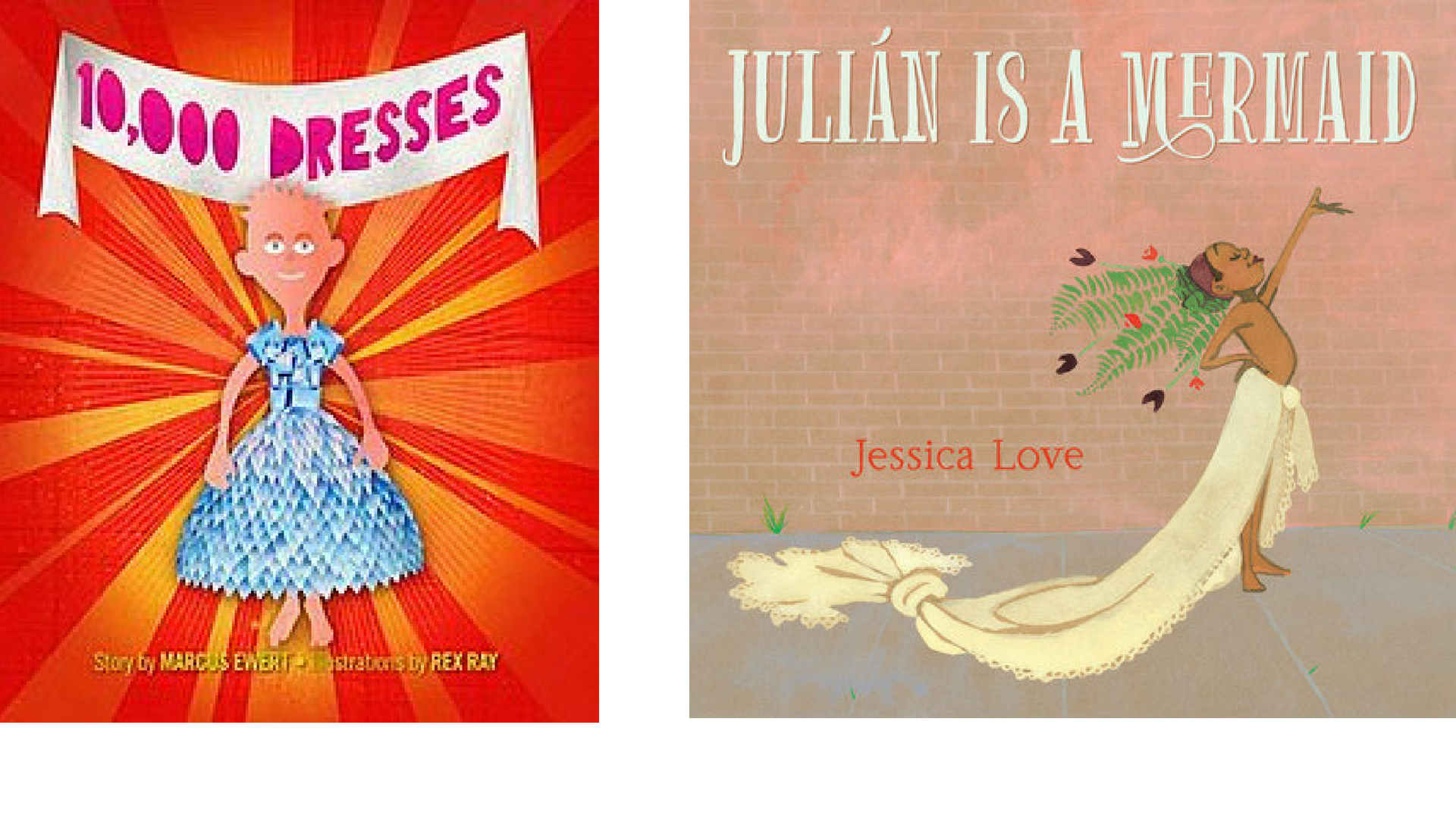
For a younger audience, 10,000 Dresses, by Marcus Ewart, illustrated by Rex Ray, is a story about a child named Bailey, who dreams every night about beautiful dresses, but whose parents believe to be a boy. The book manages to never misgender Bailey. The parent’s belief that Bailey is a boy is shown, but the book itself never describes Bailey as such. Bailey meets an older girl who, instead of rejecting or trying to ‘correct’ Bailey’s experience, accepts and encourages it. Again, both trans young people and allies are provided with examples, and positive, respectful interaction.
In Julián is a Mermaid by Jessica Love, it is Julián’s abuela who not only encourages Julián’s expression, but introduces her grandchild to a community that will embrace and celebrate him.
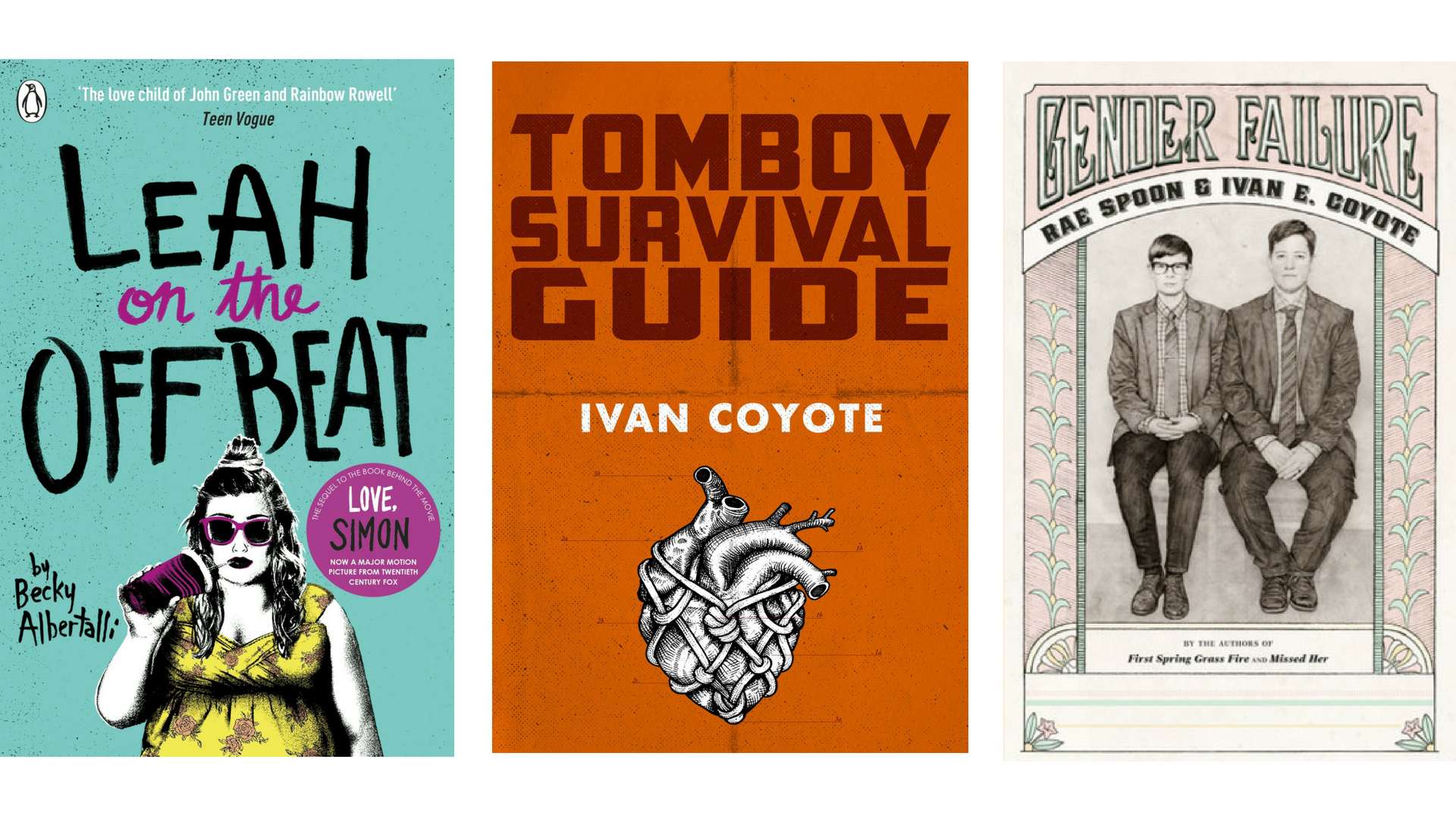
Bisexual characters aren’t often represented, even within queer fiction. When bisexual characters are present, their identities are often brushed aside, or shown as an in-between stage. Leah on the Offbeat, Becky Albertalli’s follow-up to Simon vs The Homosapien Agenda (recently adapted into the film Love, Simon) instead addresses the reality of being bisexual head on.
Hear us
While you certainly don’t need to be LGBITQ+ to write characters who are, people who are, and who write about their own experiences (whether autobiographically or creatively) bring something very special to the table.
Ivan Coyote has written nearly a dozen books. Tomboy Survival Guide and Gender Failure (with Rae Spoon) in particular may appeal to young people questioning or exploring their gender and identity, and provide a way for others to better understand the experience through stories, humour and poetry.
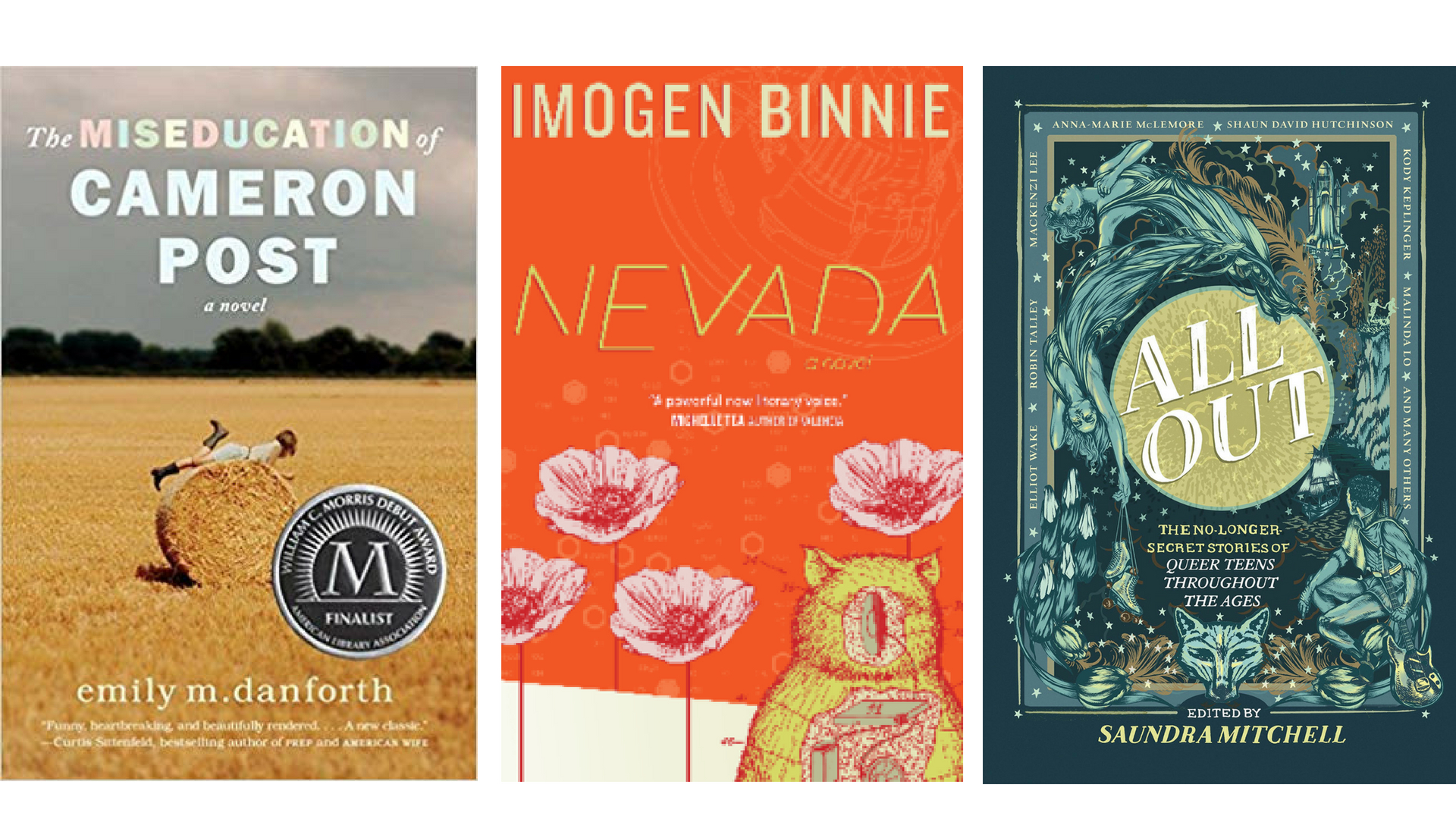
The Miseducation of Cameron Post by Emily M Danforth is a slightly heavier book that deals with topics such as loss, homophobic family members and even conversion therapy. It is written with grace and tact thanks in part to the shared experiences of Cameron Post and her author, Emily M Danforth.
Nevada by Imogen Binnie, is a story for older teens about a queer trans woman, written by a queer trans woman, and as such Nevada is able to show the lived reality of being transgender, an ongoing experience rather than a neat before-and-after.
All of our experiences are different, so when it comes to finding a book that can speak to a range of experiences, the short story anthology All Out: The No-Longer-Secret Stories of Queer Teens Throughout The Ages, edited by Saundra Mitchell, is hard to beat. All Out manages to give queer characters a place in an (often unkind) history, while still leaving readers with a sense of hope and even triumph.
There are still many diverse identities that are underrepresented in children’s and young adult literature, such as intersex characters, indigenous identities and stories that address the intersection between being LGBTQIA+ and being part of another marginalised or minority group. However, the lessons we learn from the books that do exist about embracing diversity by seeing, validating and hearing people of diverse identities can be applied broadly.
Books like these can help whether you want to learn more about your own identity, how to stand up against homophobia, biphobia and transphobia, or just read books that more accurately reflect our diverse reality.

Emmett Roberts
Emmett is a non-binary, pākehā queer from Palmerston North with a passion for space, glitter and knitting. They’re a consent educator, library studies student, and intern with InsideOUT; helping to launch the Out on the Shelves resource.



